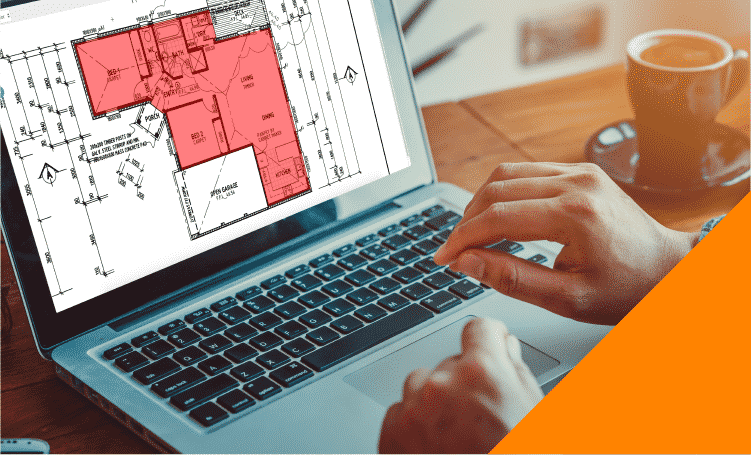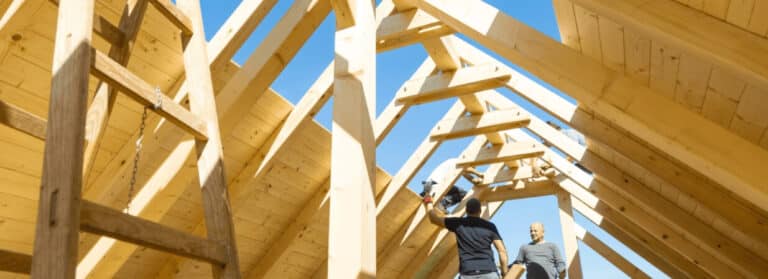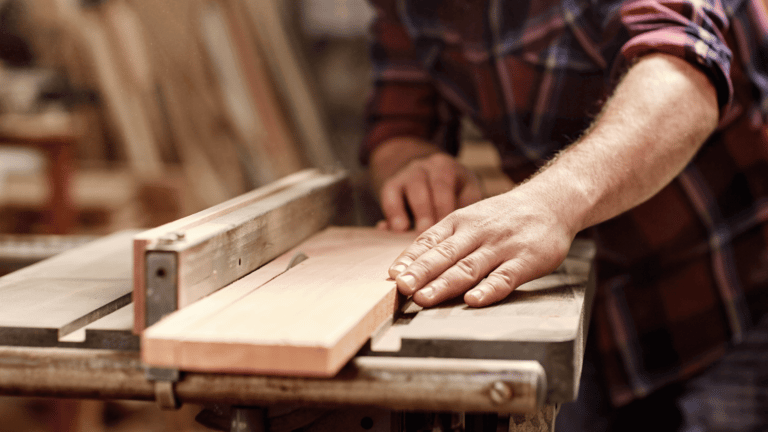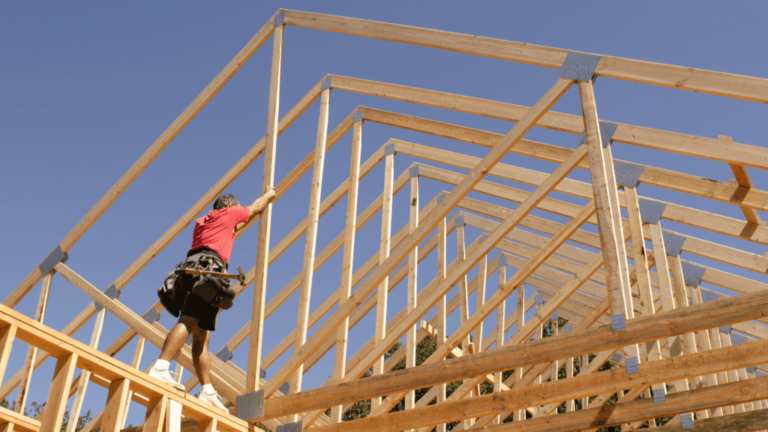To make cash in the construction industry you must ensure that your outlay is covered and profit margins maintained. The trick is knowing how to set the project price. To set a price you need to know what the entire project costs are, including the material cost, direct labor pricing, equipment and the indirect cost of the complete job. Big construction companies often have expert construction estimators, as they often do things on a larger scale; however, small builders often have to perform estimates themselves.
It doesn’t matter what size your project is, having accurate construction estimation can be the difference between your company growing with a good reputation or collapsing from lost profits and clients.
You can never underestimate the importance of construction cost estimating and here, we will explain how to estimate a project’s construction materials.
What is a materials estimate?
A material estimate is also known as a quantity takeoff, a construction takeoff or a material takeoff. It refers to taking off information from the blueprints about the materials and how much of them are needed for the build. The materials are all that is counted in a material takeoff as labor costs, equipment and other indirect costs are included in construction estimates separate from the material takeoff.
Who’s responsible for doing a materials estimate?
In a large company, there may be a dedicated estimator. Small builders or contractors may have to create the estimates themselves. Anyone who has any investment in the project, who produces tenders, bids or has a building budget should know the project costs and be involved with having a material estimate done.
If estimates are done by hand, then it is usually performed by someone with a lot of experience and knowledge of the construction industry, or they are performed with a lot of guesswork – making them very inaccurate, and liable to cost jobs or to lose profits.
With the help of construction estimating software, anyone with little knowledge can perform one quickly and accurately.
When is the right time to do a materials estimate?
A building material estimate should be performed well before any construction begins. You should, at the very least, perform a rough estimate at the idea stage of the job. This can tell you whether the project is even feasible.
Once you have decided to go ahead with the project, an accurate material estimate, or quantity takeoff, can be created from the blueprints. You can then work with your architect to ensure that you have the best building material, at the best cost, according to your construction project budget.
When all the costs have been calculated and a contract has been signed, then construction can begin.
Different types of estimates
When it comes to construction cost estimating there are different ways to count, determine or estimate the total amount of materials required.
The first method is used to build detailed, accurate estimates. We recommend that you use some kind of master checklist to ensure you don’t forget things. The second is used to estimate the surface area. Whereas the third type is useful for a rough estimate as it doesn’t consider actual costs.
The Unit Pricing Method
This method is where you count everything that is required that comes at a unit price. Such as a door, light bulb, door handle or stovetop. It also includes nails. They are sold, for example, in boxes of 500, which is considered one unit.
Count each unit of every product necessary, multiply that by their unit price and you get your total estimated price. Don’t forget to consider when the project is set to begin, prices may have inflated by then.
The Square Foot Method
To find out the area of the roof, floor and walls you need to find the square feet. You achieve this by measuring the length then multiplying it by the width. If the area is not square, then measure the longest sides.
For example, from this, you can work out how many plywood sheets you would need to complete the overall project: divide your answer by the size of one sheet, this will tell you how many plywood sheets you need.
The Rule of Two Method
As we said before, this method doesn’t consider actual costs or unit amounts, but rather begins with how much time the project shoud take and the labor costs. It is based on the premise that labor is about half of the material costs.
Through historical data and industry knowledge, you estimate the labor cost then multiply it by two, add 10%, and you have a basic cost estimation.
How to estimate construction materials for a project
Before beginning the takeoff process your basic cost estimation has shown you the feasibility of the project and so you’ve decided to go ahead with it. Now, the detailed estimation process begins.
First, you need to decide the materials needed to complete the project and that will probably, for most construction projects, start with a site visit. This will help to detect any issues and any extra material needed to shore up the site. Even two jobs based on the same drawing will be different because of the worksite. Don’t forget, you need to count all the materials necessary to estimate project costs.
Decide which products to use
Part of the cost estimating process is deciding which raw materials and products to use in the house or building project that you are undertaking. Perhaps your client wants eco-friendly products, or a certain product would offer better drainage of the site. Maybe there are regulations that apply in the region or certain products are easier, or harder, to get hold of in the area. Product delivery must be considered, the same as if you need a material faster than normal. How will this impact your choice of product? Estimating software can help price the products using your supplier’s price lists.
Calculate quantity of materials
Now that you’ve decided the materials best suited to the project, it’s time to count and calculate their cost. Start with your blueprints and create a quantity takeoff.
Count
You must count every product used. For air conditioners, ovens or windows they are counted individually. For nails, lightbulbs or hinges they are counted by unit. In other words, by the box.
Length
When it comes to material like lumber, pipe or cornices they are measured by length. Although you always want to cover your project’s needs, you don’t want to have too much waste either.
Area
Products like carpet, paint or tiles that have an area to cover are calculated by length x width.
Volume
Concrete or landfill are measured by volume, length x width x depth. This gives you the cubic foot, cubic yards or cubic meter.
Calculating cost of materials
Once you understand how much material is required, the square footage etc, you need to find out the material prices. If you are creating your takeoff by hand, then you will have to research or have knowledge of prices.
However, with software, you can have cost lists and databases at your fingertips. Once again, don’t forget to consider the impact of inflation on price if the estimate is for one of your future projects.
Digital estimate vs manual estimate
Basically, you have two ways of creating a construction materials estimate, manually or digitally. If you choose to do one manually, then you likely rough an estimate together based on your past projects, which hopefully have been a success, and hope it works out all right. Or you can take the more time-consuming manual method and count all the material required and calculate an accurate cost estimation with a calculator.
The other option is 80% faster, is less prone to error and is a lot more accurate – the digital estimate.
Using estimating software
If you have been in the industry for years or you are just starting up work, do yourself a favor and add construction estimating and management software to your business startup costs.
Not only will you build your business, your profits and your reputation, but you will take back more of your precious time. Good construction estimating and management software takes care of communication, has cost databases uploaded, offers the ability to easily add photos, manages your scheduling, stores all the project documents, and is cloud-based for easy mobile access. It also integrates with your accounting software for easy money management, and above all, it is easy to-use, accurate and makes you money.
Book a demo of our Buildxact construction estimating and management software or try it with our 14-day free trial. Our easy-to-use software makes the estimation process a breeze. Don’t lose money on under quoted construction costs, get started and give your business the boost it needs. Create accurate estimates that lead to success with every job you undertake.

























